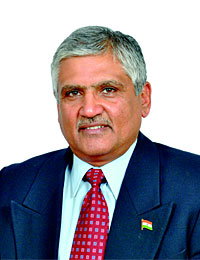Publisher’s Note
 Traditionally, lubricants have been treated as consumables which can easily be discarded and replaced at specified intervals. However, with the changes in the economy, the fluctuating prices of natural resources and the impact of processing these products on the environment, these should no longer be treated as consumables. Viewing lubes as assets is the first step in extending the life of the lubricant as well as the equipment. Engineers can set you up with the right high-performance lubricant for the application and show you how to keep it clean and dry with reliability products and services.
Traditionally, lubricants have been treated as consumables which can easily be discarded and replaced at specified intervals. However, with the changes in the economy, the fluctuating prices of natural resources and the impact of processing these products on the environment, these should no longer be treated as consumables. Viewing lubes as assets is the first step in extending the life of the lubricant as well as the equipment. Engineers can set you up with the right high-performance lubricant for the application and show you how to keep it clean and dry with reliability products and services.
While reducing energy or fuel consumption is an important aspect of any lubrication sustainability policy, so too is reducing the amount of oil or grease that is used. Using less oil or grease means less oil production, fewer carbon emissions, and less waste that requires disposal.
Many organizations are moving their asset-management policies toward the ISO 55000 standard, with sustainability as a firm pillar of the standard. This provides a prescriptive series of recommendations for precision lubrication and lubrication sustainability.
One of the fundamental tenets of ISO 55000 and ICML 55 is the definition of an asset beyond a machine to anything that has tangible value to the organization. By that definition, a lubricant should be considered an asset since the effectiveness of the lubricant can have a profound impact on equipment life and energy usage. Gone are the days when oil was considered to be a consumable, purchased at the lowest price and changed out on a whim. The health, well-being, and cleanliness of the lubricant should be nurtured to extract maximum value from this important asset.
Most OEMs specify an oil-change interval for new equipment. For the large part, these recommendations are very conservative, with good reason. No OEM is going to recommend a two-year (or longer) oil drain if there is even a remote chance that, in doing so, the equipment may fail, resulting in a warranty claim. The old (incorrect) adage that “new oil is cheap insurance” is still held near and dear by many OEMs.
OEM oil-change intervals can often be safely extended by as much as two to five times, provided a quality lubricant is used, and the health of the lubricant is monitored. To ensure that oil or grease is fit for continued use fluid analysis should be used. Critical tests, such as acid and base number, oil oxidation and oxidation potential as well as, additive health, can all be measured and should be used to change behaviours from time-based to on-condition oil changes.
Online oil-quality sensors can also be effective in helping to time oil changes based on fluid health. Unlike the algorithms used by many automotive manufacturers to signal the time for an oil change, these are actual sensors that use changes in fluid conductivity or permittivity to detect changes in base oil and/or additive chemistry. By monitoring oil health in real-time using a sensor, the data can also be correlated with the operational aspect of the component in question.
We thank the readers for their feedback and suggestions on articles and case studies that they want us to cover in the magazine. We look forward to the continued patronage of the advertisers and the subscribers.
Warm regards,
Udey Dhir
